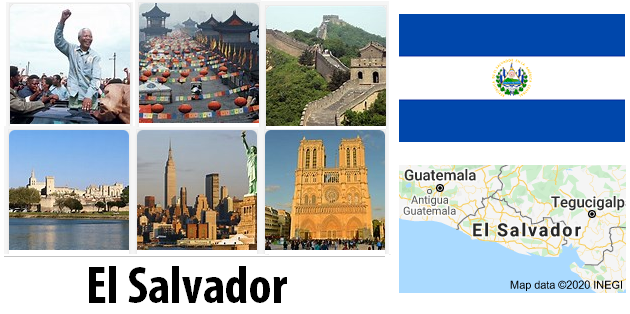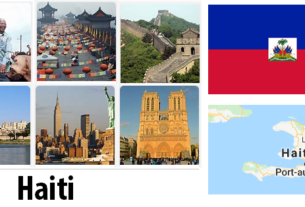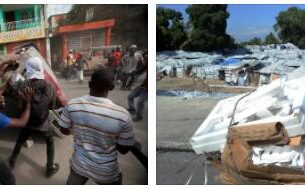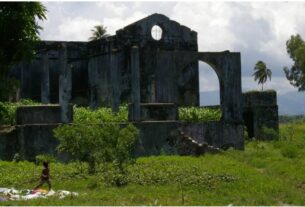In 1524 the brothers Pedro and Giorgio de Alvarado, after the occupation of Guatemala, conquered El Salvador and joined it to Guatemala.
In 1525 they founded the capital which they called San Salvador.
There is no separate history of Salvador for the entire colonial period as its events were exactly the same as the Guatemalan ones.
It was in the city of San Salvador that the first rebellious movements against the Crown of Spain took place.
When in the 1821 Guatemala proclaimed its independence Salvador continued to be always its aggregate.
On January 5, 1822 Guatemala was annexed to Mexico; Salvador opposed but had to submit to the armed intervention of the Mexican general Filisola.
In 1823 the “Federation of the United Provinces of Central America” was created and Salvador entered this organization as a state in itself.
But the Federation did not have an easy life because rivalries and internal struggles immediately started, so in 1839 Salvador
detached himself to become an Independent Republic. In 1842 he joined Honduras, but this union was also short-lived; after three years it broke up.
Another union attempt was made in 1889, which failed the following year. The Republic of Central America formed by El Salvador, Honduras and Nicaragua in 1894 lasted a few years longer and dissolved in 1898. And the same happened to the Republic of Central America formed with Guatemala and Salvador on September 15, 1921.
The history of Salvador is punctuated by these short unions, in an attempt to be part of a political body of a certain thickness; always dissolved unions for contrasts with other states especially with Guatemala, and for internal struggles between parties, which often affected neighboring states.
In October 1935, under the presidency of MH Martinez, a plot occurred to oust him, but he was immediately repressed.
In December 1936 El Salvador suffered severe damage from an earthquake that completely destroyed the city of San Vicente and in
1937 another hit the city of Ahuachapan. Also in 1937, on July 26, Salvador withdrew from the League of Nations.
In November 1938 President Martinez convened the Constituent Assembly which canceled the elections that were due to take place the following year and postponed the powers of the President until 1945.
At the outbreak of World War II, the country’s economy suffered greatly from the lack of exports to Europe, especially that of coffee, which was partly diverted to the United States. And it was precisely with the United States that President Hernandez was in close collaboration, who forced all teachers to include democratic doctrines among school subjects.
In 1941 El Salvador declared war on the Tripartite and inside the state of siege was proclaimed which was renewed every three months.
In February 1944 the Assembly once again extended the mandate to the President who, however, also had to resign in May, forced by a popular rebellion. AJ Mendenez was appointed provisional president, but he too had to leave office in October and the Vice-president, M. Tomas Molina, already a refugee in Nicaragua, established the government in exile there.
In January 1945, having elected the government candidate S. Castaneda Castro, having been the regular elections, El Salvador was admitted to the Chapultepec Conference. See Countryaah for population and country facts about El Salvador.
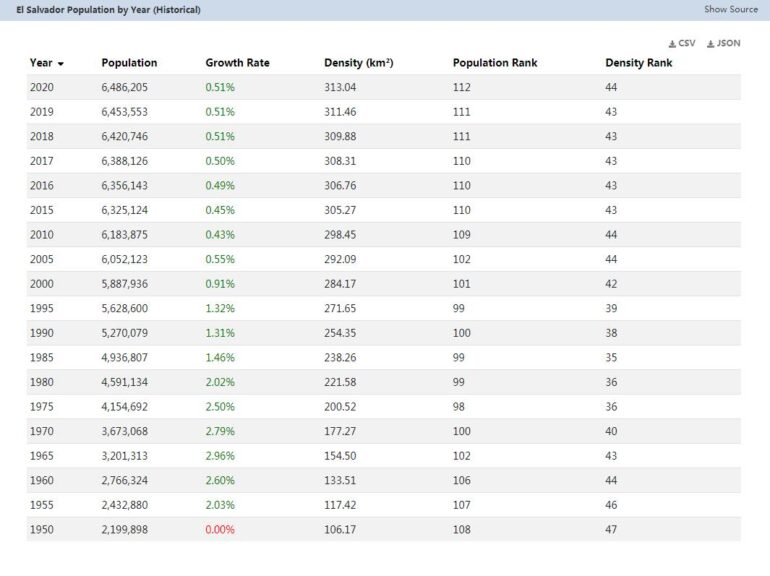 The new president immediately granted an amnesty, began updating the Constitution and concluded agreements with Guatemala for their customs union.
The new president immediately granted an amnesty, began updating the Constitution and concluded agreements with Guatemala for their customs union.
In December 1948 there was a coup that overthrew it and provisional power was taken over by Colonel Oscar Osorio, who immediately began several economic plans for the improvement of the country in all sectors. Then, with the March 1950 elections, he was elected by majority president. He promoted a large industrialization and then wanted to remove agriculture from the monoculture system, which was then that of coffee, directing it to various production fields. Then he issued a new constitution which guaranteed the vote for women.
For international politics, he established stronger relations with neighboring states and on October 14, 1951 in San Salvador he signed the “Charter of the Organization of the States of Central America”, together with Costa Rica, Guatemala, Honduras and Nicaragua.
The elections of March 4, 1956 took place in an atmosphere of contestation; 5 opposition parties withdrew from the voting and the government candidate Josè Maria Lemus was elected who promised to fight, equally, all extremists, both right and left. In February 1957 he joined the Odeca countries to create a free trade area. In 1958 he always proposed to the Odeca states to come together to form a Constituent Assembly common to all. Despite the correctness of his policy he had to register popular sympathies for Fidel Castro when he came to power in Cuba, as well as riots and protests before the U.S. Embassy when two employees of the Cuban Embassy were expelled from El Salvador,
In this same year, in September, a plot was discovered, supported by “paid Sino-Soviet agitators”, which led to the state of siege. In October, the concerns of the country resulted in a coup, for which Lemus was deposed and a mixed junta was formed, consisting of 3 soldiers and 3 civilians; this Junta, however, suspected of “castrism” was dissolved in January 1961 and was replaced by a “Directory” chaired by Rafael Eguizabal Tobias, who immediately promised new elections and agrarian reform.
This ‘directory’ was accused of pro-communism and with the restoration of regular elections in April 1962, the only candidate, Colonel JA Rivera, won the fate of the country until 1967.
He immediately implemented the agrarian reform, with the promised diversification of crops; increased industries and exports. Then, loyal to the Constitution, despite having become extremely popular with all the masses, he did not appear in the
1967 elections which were the prerogative of Colonel F. Sanchez-Hernandez, of the NCP, “Partido de Conciliacion National”, supported by the nationalist military center.
